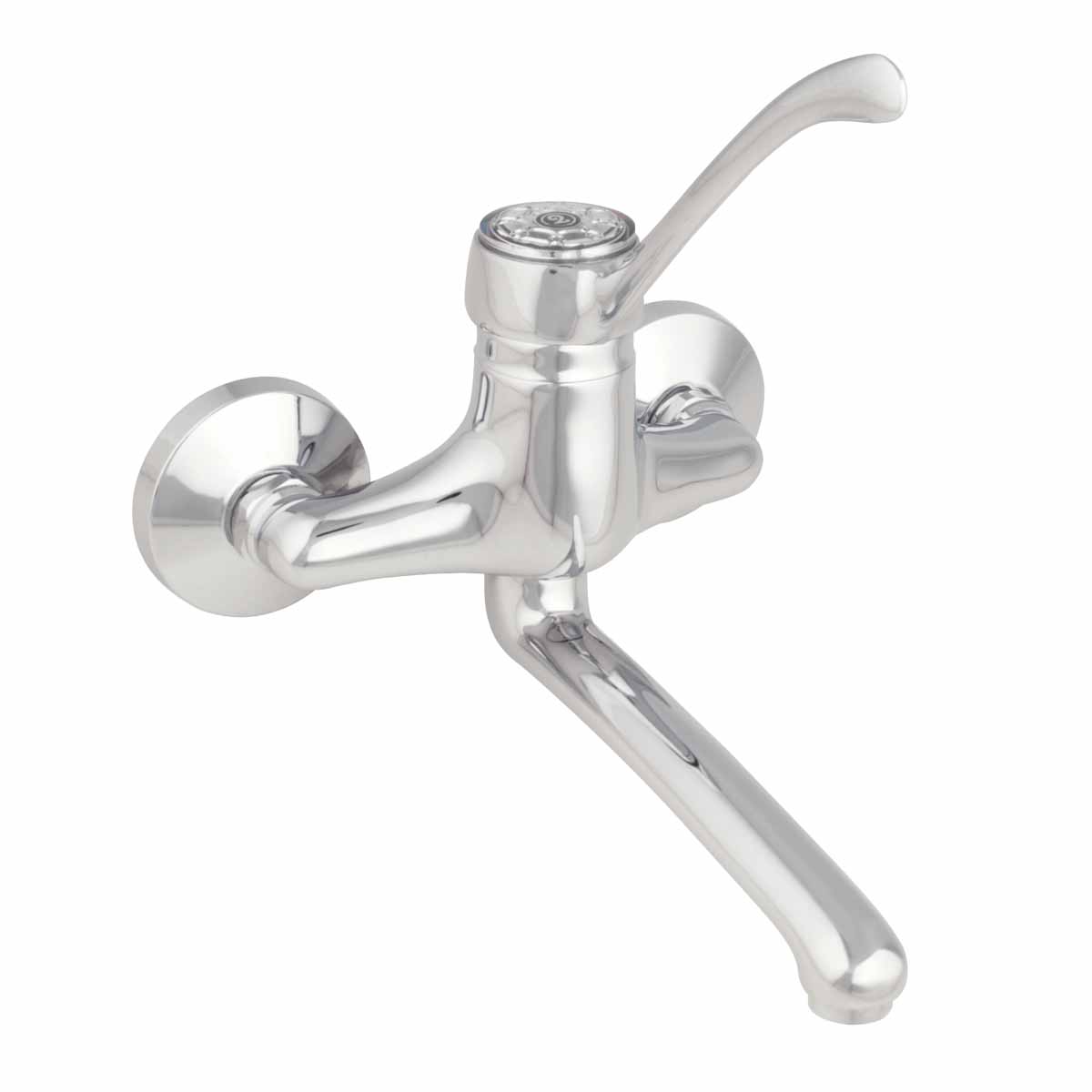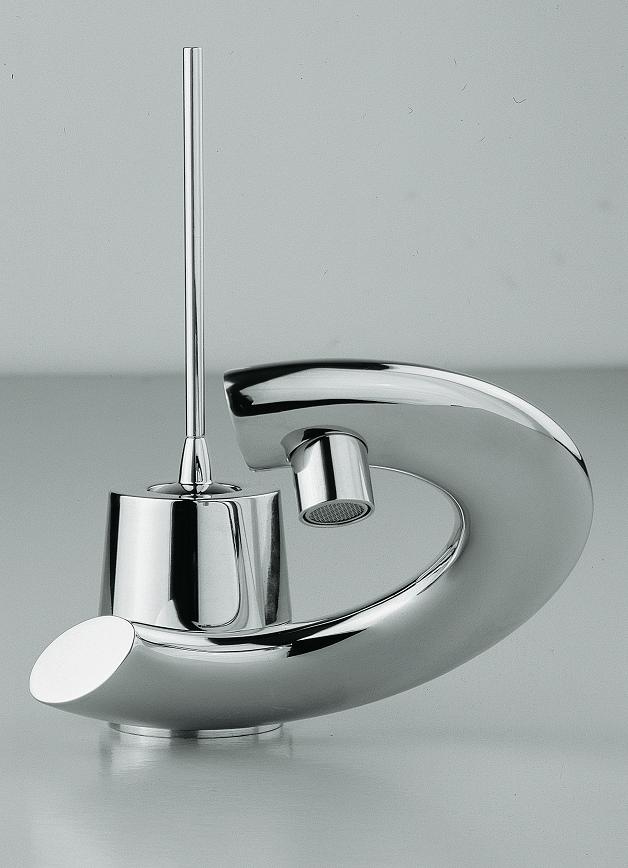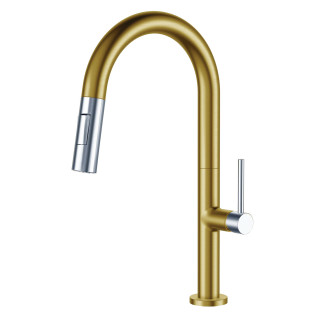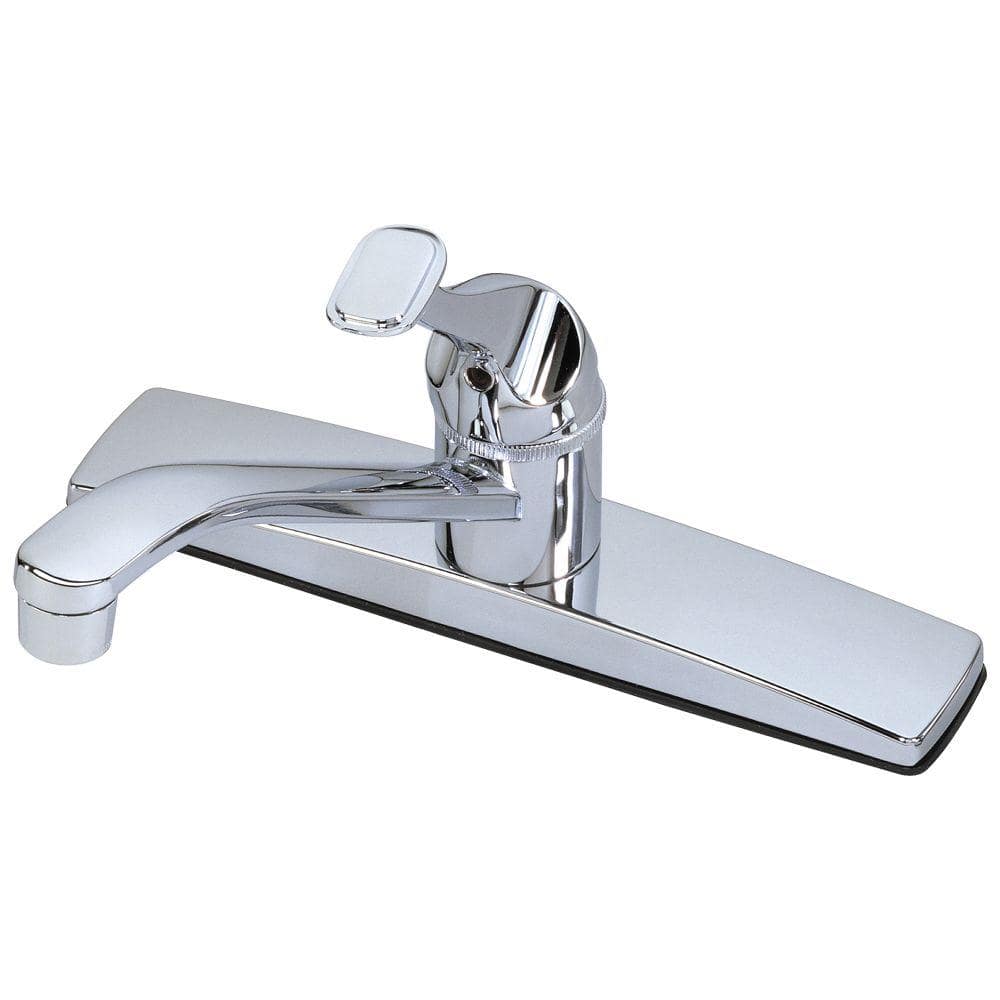The kitchen faucet is an essential component of any kitchen, serving both practical and aesthetic purposes. With a myriad of options available, selecting the right kitchen faucet fixture can significantly impact the overall functionality and design of your kitchen. Let’s explore different types of kitchen faucets, their features and benefits, installation considerations, and maintenance tips. We will also highlight common mistakes to avoid and address frequently asked questions to guide you in making an informed decision.

Types of Kitchen Faucets
Single-Handle Faucets
Single-handle faucets are popular for their simplicity and ease of use. They feature one lever that controls both the water temperature and flow rate, making them convenient for quick adjustments. This type of faucet is ideal for busy kitchens where efficiency is key. The streamlined design also contributes to a clean and modern look, which can complement various kitchen styles.
Double-Handle Faucets
Double-handle faucets have separate controls for hot and cold water, typically mounted on either side of the spout. This traditional style offers precise control over water temperature, which can be beneficial for tasks that require specific water settings. Double-handle faucets often have a classic, elegant appearance that suits traditional or vintage kitchen designs. However, they can be slightly more challenging to install and require more space compared to single-handle options.
Pull-Down and Pull-Out Faucets
Pull-down and pull-out faucets feature a spray head that can be pulled away from the spout for increased flexibility and reach. Pull-down faucets have a high-arc design, making them suitable for deep sinks and tasks like filling large pots. Pull-out faucets, on the other hand, have a lower profile and a longer hose, offering more maneuverability. Both types are excellent for cleaning and rinsing, providing versatility that enhances kitchen functionality.
Touchless and Touch-Activated Faucets
Touchless and touch-activated faucets are equipped with sensors or touch technology that allow you to turn the water on and off without using the handle. These modern faucets are highly hygienic, reducing the spread of germs and making them ideal for busy kitchens. They are also convenient when your hands are full or dirty. Touchless faucets typically use motion sensors, while touch-activated models respond to a simple touch anywhere on the faucet body.

Features and Benefits
Water Efficiency
Many modern kitchen faucets are designed with water efficiency in mind, featuring aerators and flow restrictors that help conserve water without sacrificing performance. Water-efficient faucets can significantly reduce your water usage and lower utility bills. Look for faucets with the WaterSense label, which indicates they meet EPA standards for water efficiency and performance.
High-Arc vs. Low-Arc Spouts
The height of the spout can impact both the aesthetics and functionality of the faucet. High-arc spouts, also known as gooseneck spouts, provide more clearance for filling large pots and washing oversized items. They also add a dramatic visual element to the kitchen. Low-arc spouts, in contrast, have a more compact design that can be beneficial in smaller kitchens or when working with limited overhead space. Choosing between high-arc and low-arc spouts depends on your specific needs and kitchen layout.
Spray and Stream Modes
Modern kitchen faucets often come with multiple spray and stream modes, offering versatility for various tasks. Common options include a steady stream for filling pots and a powerful spray for rinsing dishes and produce. Some faucets also have a pause function, which allows you to temporarily stop the water flow without changing the temperature setting. These features enhance the overall convenience and efficiency of the faucet.
Material and Finish Options
The material and finish of a kitchen faucet can greatly influence its durability and aesthetic appeal. Common materials include stainless steel, brass, and plastic, each offering different levels of strength and resistance to corrosion. Finishes range from chrome and brushed nickel to oil-rubbed bronze and matte black, providing a wide array of choices to match your kitchen décor. High-quality materials and finishes not only ensure longevity but also contribute to the overall look and feel of the kitchen.

Installation Considerations
Mounting Styles
Kitchen faucets can be mounted in various ways, including deck-mounted, wall-mounted, and undermount configurations. Deck-mounted faucets are installed directly onto the countertop or sink and are the most common type. Wall-mounted faucets are attached to the wall above the sink, providing a clean and modern look while freeing up counter space. Undermount faucets are less common and typically used in specific sink and countertop designs. The choice of mounting style depends on your kitchen layout and personal preference.
Number of Holes
The number of holes in your sink or countertop is an important consideration when selecting a new faucet. Single-handle faucets typically require one hole, while double-handle faucets need three or more. Some faucets come with an escutcheon plate that covers additional holes for a cleaner appearance. It’s essential to ensure that the faucet you choose is compatible with the existing holes or be prepared to drill new ones if necessary.
Professional Installation vs. DIY
Deciding between professional installation and a DIY approach depends on your comfort level and experience with plumbing. Professional installation ensures that the faucet is installed correctly and securely, reducing the risk of leaks or other issues. However, many faucets come with detailed instructions and are designed for easy installation, making a DIY approach feasible for those with basic plumbing skills. Be sure to follow the manufacturer’s guidelines and take necessary precautions to avoid potential problems.
Compatibility with Existing Plumbing
Before purchasing a new kitchen faucet, it’s crucial to check compatibility with your existing plumbing. This includes ensuring that the faucet connections match the water supply lines and that the water pressure is adequate for the faucet’s features. In some cases, additional adapters or modifications may be required to achieve a proper fit. Consulting with a professional plumber can help identify any compatibility issues and provide solutions.

Maintenance and Care
Regular Cleaning
Regular cleaning is essential to keep your kitchen faucet looking and functioning its best. Use a mild soap and water solution to wipe down the faucet, avoiding abrasive cleaners that can damage the finish. For stubborn stains or mineral deposits, a vinegar solution can be effective. Regular cleaning prevents the buildup of grime and keeps the faucet looking shiny and new.
Addressing Leaks
Leaks can develop over time due to worn-out seals or O-rings. Addressing leaks promptly is crucial to prevent water damage and maintain the efficiency of the faucet. In most cases, replacing the faulty parts can resolve the issue. Many faucet manufacturers offer repair kits with the necessary components and instructions for fixing common leaks.
Maintaining Finish
The finish of your kitchen faucet can deteriorate over time due to exposure to water, cleaning agents, and general wear and tear. To maintain the finish, avoid using harsh chemicals or abrasive scrubbers. Instead, use a soft cloth and mild detergent to clean the surface. Applying a protective wax or sealant periodically can also help preserve the finish and extend the life of the faucet.
Seasonal Maintenance
In regions with freezing temperatures, it’s important to take seasonal maintenance steps to protect your kitchen faucet. This includes insulating exposed pipes to prevent freezing and ensuring that the faucet and water lines are properly drained if you plan to be away during the winter. Regularly inspecting the faucet for any signs of damage or wear can help identify potential issues before they become serious problems.

Common Mistakes to Avoid
Choosing the Wrong Size and Style
One common mistake is selecting a kitchen faucet that doesn’t fit the overall design or size of the kitchen. It’s essential to choose a faucet that complements the sink and countertop, both in terms of style and proportion. A faucet that is too large or too small can disrupt the visual balance of the kitchen and may not function as intended.
Ignoring Water Pressure Compatibility
Another mistake is ignoring the compatibility of the faucet with the existing water pressure in your home. Some modern faucets with advanced features require a minimum water pressure to operate correctly. Installing a faucet without considering water pressure compatibility can lead to performance issues, such as weak water flow or malfunctioning spray modes.
Skipping Professional Advice
While many homeowners opt for a DIY installation, skipping professional advice can lead to mistakes and potential problems down the line. Consulting with a plumber or a kitchen design expert can provide valuable insights and ensure that the faucet is installed correctly and functions optimally. Professional advice can also help identify potential issues with existing plumbing that may need to be addressed.
Neglecting Regular Maintenance
Neglecting regular maintenance is a common mistake that can shorten the lifespan of your kitchen faucet. Regular cleaning, addressing leaks promptly, and maintaining the finish are essential practices to keep the faucet in good condition. Ignoring maintenance can lead to build-up of grime, corrosion, and other issues that compromise the functionality and appearance of the faucet.

What are the benefits of a pull-down or pull-out kitchen faucet?
Pull-down and pull-out kitchen faucets offer increased flexibility and convenience. The retractable spray head allows for easy maneuvering, making tasks like rinsing dishes, filling pots, and cleaning the sink more efficient. Pull-down faucets typically have a high-arc design suitable for deep sinks, while pull-out faucets offer greater reach with a lower profile. Both types provide versatility and can enhance the overall functionality of the kitchen.
How do touchless and touch-activated faucets work?
Touchless faucets use motion sensors to detect hand movements, automatically turning the water on and off without physical contact. Touch-activated faucets respond to a simple touch anywhere on the faucet body or handle. Both types promote hygiene by reducing the spread of germs and are convenient when your hands are full or dirty. They are powered by batteries or an AC adapter and often feature manual overrides for traditional operation.
What factors should I consider when choosing a kitchen faucet finish?
When choosing a kitchen faucet finish, consider factors such as durability, maintenance, and overall kitchen design. Common finishes include chrome, brushed nickel, stainless steel, oil-rubbed bronze, and matte black. Chrome is highly reflective and easy to clean but shows water spots and fingerprints. Brushed nickel and stainless steel offer a more subdued look and are resistant to smudges. Oil-rubbed bronze and matte black provide a distinctive, elegant appearance but may require more maintenance to keep them looking pristine.
Can I install a new kitchen faucet myself, or do I need a professional?
Installing a new kitchen faucet can be a DIY project if you have basic plumbing skills and follow the manufacturer’s instructions carefully. Many faucets are designed for easy installation and come with detailed guides. However, if you encounter compatibility issues, complex plumbing configurations, or lack confidence in your abilities, it’s advisable to hire a professional plumber. Professional installation ensures that the faucet is installed correctly, minimizing the risk of leaks or other problems.
How can I improve the water efficiency of my kitchen faucet?
To improve the water efficiency of your kitchen faucet, consider installing a faucet with an aerator or flow restrictor. These devices reduce water flow without compromising performance. Look for faucets with the WaterSense label, indicating they meet EPA standards for water efficiency. Additionally, fix any leaks promptly, as even small drips can lead to significant water waste over time. Regularly check and maintain your faucet to ensure optimal performance and efficiency.

Kitchen Faucet & Fixture Replacement near me

First “KOHLER Signature Store” in Vancouver

Homewerks Worldwide Single-Handle Standard Kitchen Faucet in Polished Chrome-30-K81WNRNDCHB-Z

Shower Faucets Bathtub Plumbing Bathroom Fixtures

Bathtub Faucet/Spout Replacement – Edgerton, Ohio JeremyKrill.com

The Allure of Arts & Crafts Kitchens & Baths – Design for the Arts & Crafts House Arts

Related Posts:
- Kitchen Faucet Plumbing
- Moen Haysfield Single Handle Pulldown Kitchen Faucet
- Kohler White Kitchen Faucet With Spray
- Moen One Handle Pullout Kitchen Faucet
- Moen Kitchen Faucet Filter
- Kitchen Faucet With Light
- Moen Boutique Pulldown Kitchen Faucet Reviews
- Natural Brass Kitchen Faucet
- Champagne Kitchen Faucet
- High Arc Kitchen Faucet Splash